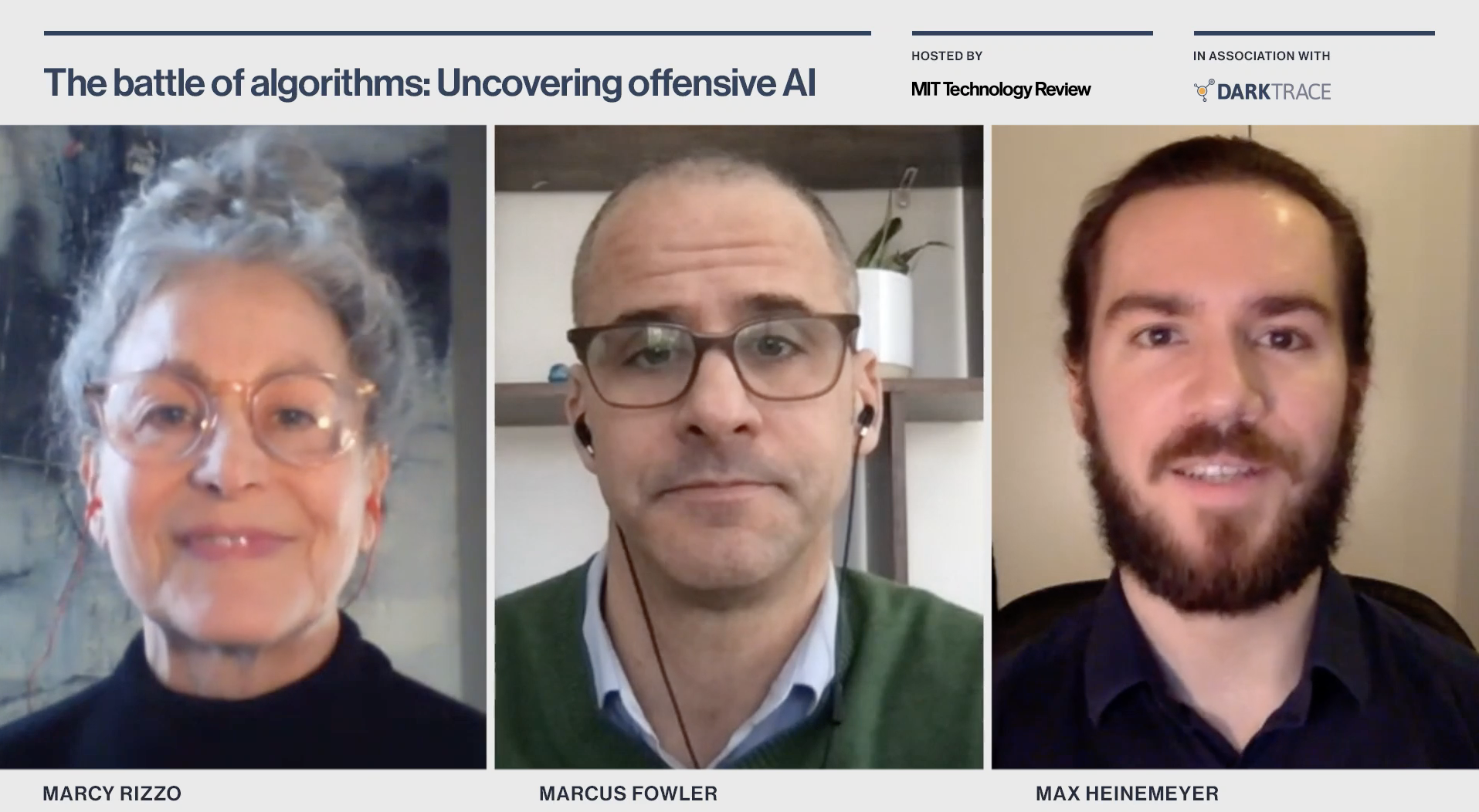Sponsored
The battle of algorithms: Uncovering offensive AI
Learn about current and emerging applications of offensive AI, defensive AI, and the ongoing battle of algorithms between the two.
In association withDarktrace
As machine-learning applications move into the mainstream, a new era of cyber threat is emerging—one that uses offensive artificial intelligence (AI) to supercharge attack campaigns. Offensive AI allows attackers to automate reconnaissance, craft tailored impersonation attacks, and even self-propagate to avoid detection. Security teams can prepare by turning to defensive AI to fight back—using autonomous cyber defense that learns on the job to detect and respond to even the most subtle indicators of an attack, no matter where it appears.

MIT Technology Review recently sat down with experts from Darktrace—Marcus Fowler, director of strategic threat, and Max Heinemeyer, director of threat hunting—to discuss the current and emerging applications of offensive AI, defensive AI, and the ongoing battle of algorithms between the two.
This content was produced by Insights, the custom content arm of MIT Technology Review. It was not written by MIT Technology Review’s editorial staff.
Deep Dive
Artificial intelligence
Large language models can do jaw-dropping things. But nobody knows exactly why.
And that's a problem. Figuring it out is one of the biggest scientific puzzles of our time and a crucial step towards controlling more powerful future models.
Google DeepMind’s new generative model makes Super Mario–like games from scratch
Genie learns how to control games by watching hours and hours of video. It could help train next-gen robots too.
What’s next for generative video
OpenAI's Sora has raised the bar for AI moviemaking. Here are four things to bear in mind as we wrap our heads around what's coming.
Stay connected
Get the latest updates from
MIT Technology Review
Discover special offers, top stories, upcoming events, and more.